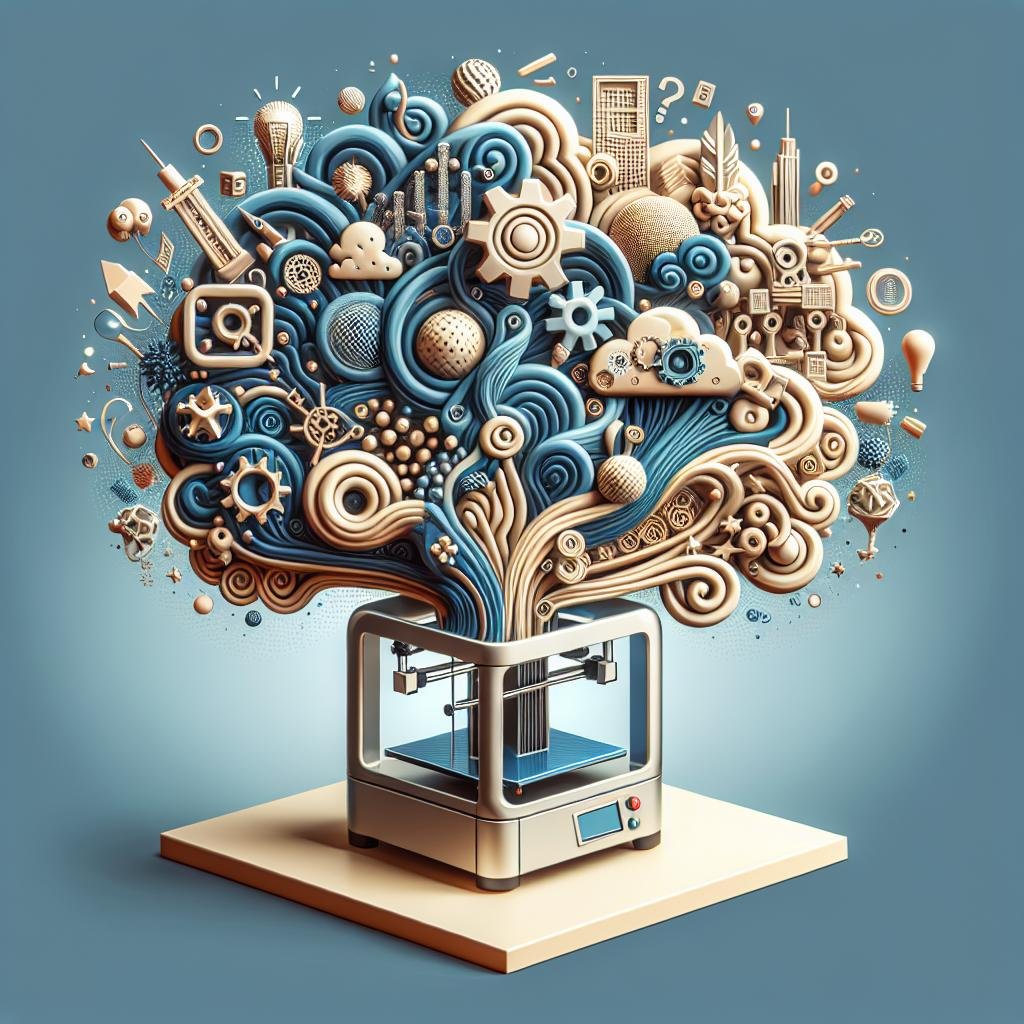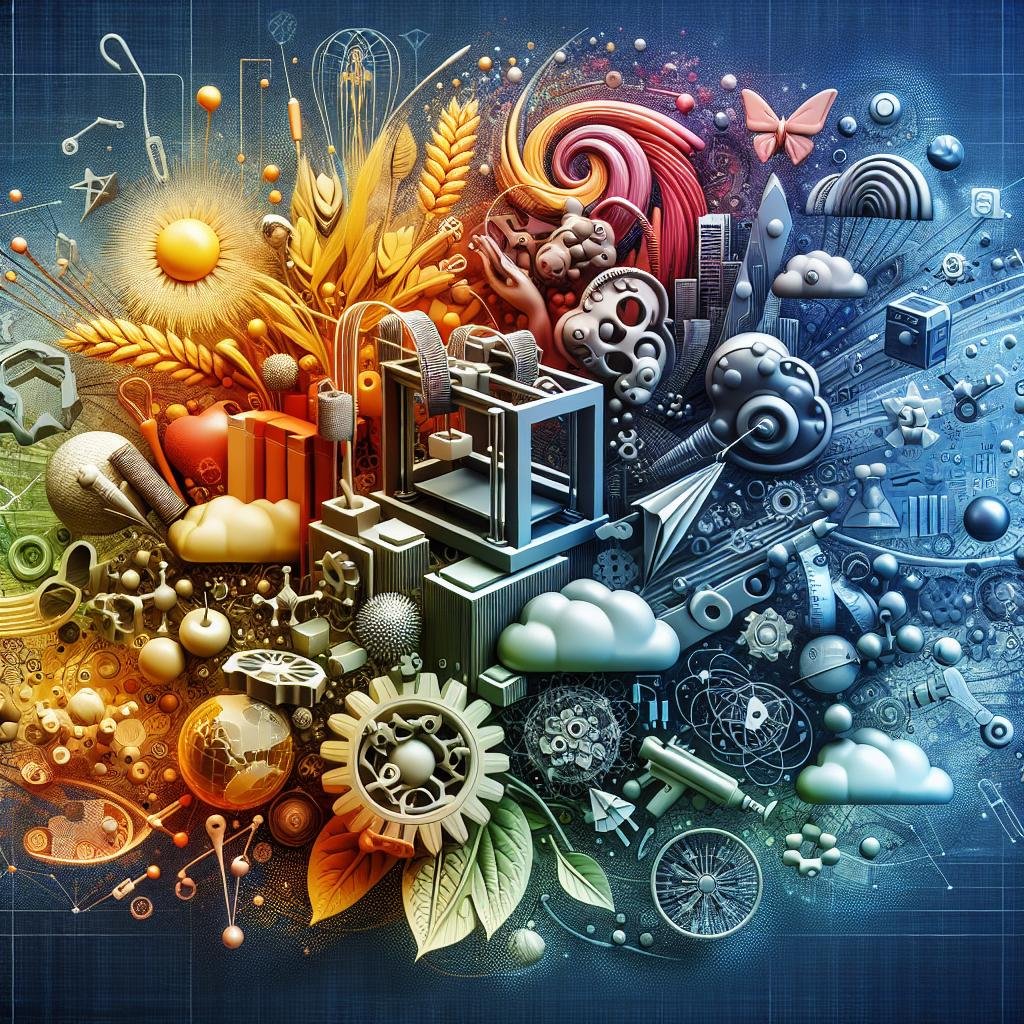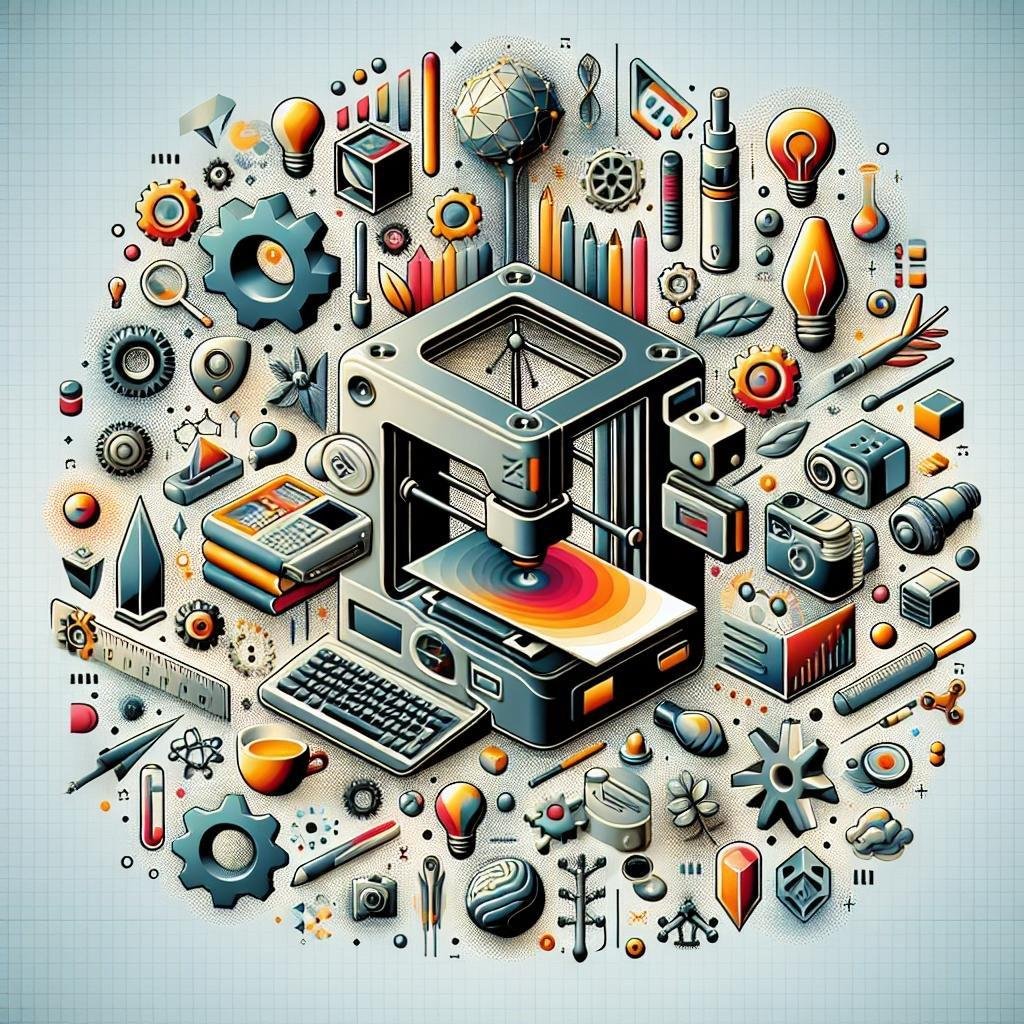In a world where technology is evolving at breakneck speed, 3D printing shines as a captivating marvel, frequently enough floating in the realm of science fiction as much as reality. But as this remarkable innovation becomes more accessible, so too does the fog of misunderstanding surrounding it.Join us on a delightful journey as we unravel the tangled web of misconceptions that have attached themselves to 3D printing. From tales of magical machines that can print anything under the sun to the lingering myths of cost and complexity, we’ll set the record straight with a friendly nod and a wink. So grab a cup of coffee, settle into your favorite chair, and let’s dive into the interesting world of 3D printing to clear up what you might have thought you knew!
Unraveling the Myths: The True Cost and Accessibility of 3D Printing
Manny people still hold onto the idea that 3D printing is an expensive and exclusive technology reserved onyl for tech giants and large corporations. In reality, the cost barriers are lower than ever before. Over the last decade, prices for 3D printers have dramatically decreased, making them accessible to hobbyists and small businesses alike. Entry-level 3D printers can now be found for as low as a few hundred dollars, ideal for personal projects, while offering the same foundational capabilities as their pricier counterparts. In addition to the affordability of the machines themselves, a variety of free design software is available, providing ample resources to kickstart projects without additional costs. These days, diving into the world of 3D printing is similar to buying a home printer or investing in an entry-level DSLR camera—not a tech luxury, but an increasingly necessary tool.
Another myth is that 3D printing materials are rare and expensive, limiting the creativity and scalability of projects. Contrary to this belief, a wide range of materials is accessible at reasonable costs, from the often-used PLA (Polylactic Acid) and ABS (Acrylonitrile Butadiene Styrene) to more advanced materials like nylon and flexible filaments. To simplify your understanding, here’s a rapid overview of some common 3D printing materials:
| common Uses | ||
|---|---|---|
| PLA | $20 – $30 | Prototypes, Home Projects |
| ABS | $20 – $50 | Toys, Automotive Parts |
| Nylon | $30 – $70 | Industrial Parts, Gears |
This variety ensures that the world of 3D printing is not just economical but also filled with creative possibilities, allowing users to explore and innovate without significant financial constraints.

Design Limitations in 3D Printing: Breaking Through Imaginary Barriers
While the wonders of 3D printing have captured the creativity of innovators and hobbyists alike, many perceive its potential through a lens tinted by misconceptions. One of the primary myths is that 3D printing is shackled by severe design limitations. yet, this technology’s flexible nature allows for an array of design possibilities. For instance, complex geometries and intricate lattice structures that are nearly impractical to achieve through conventional manufacturing techniques can be effortlessly created. Moreover,the evolution of software and printers continuously expands these horizons,allowing for even more detailed and sophisticated creations.
Some of the frequently misunderstood limitations revolve around materials and scalability. Let’s break these imaginary barriers with some friendly clarifications:
- Material Diversity: Beyond the well-known plastic filaments, modern 3D printers can use metal, ceramics, and even bio-materials for various applications.
- Scalability: Though primarily used for smaller-scale items, recent advancements offer burgeoning potential for larger and more complex structures without sacrificing detail.
- Surface Finish: Techniques such as sanding, chemical smoothing, and painting can achieve a professional-grade finish that rivals traditionally manufactured parts.
| Myth | Reality |
|---|---|
| Cannot print large objects | Scalable with new printer models |
| Limited to plastics | Incorporates metals, ceramics, and more |
| Poor surface quality | Enhanced via post-processing techniques |

Eco-Friendly or Eco-Foe: The Environmental Impact of 3D Printing Explored
When it comes to the world of additive manufacturing, many people assume that this technology is entirely eco-friendly. While 3D printing offers several environmental benefits, such as reducing waste through precise material usage and the potential for on-demand production that minimizes overproduction, it’s not without its pitfalls. The misconception arises when these positives overshadow the reality of its carbon footprint and material sourcing challenges. is 3D printing always green? Not quite.The truth is, it heavily depends on the materials used. Biodegradable filaments offer one enduring path, yet many printers still rely on plastics derived from petroleum. moreover, the energy consumption during the printing process, especially in larger industrial settings, might counteract some of the environmental benefits.
Another common myth is that 3D printing always accelerates the journey toward sustainability.While it certainly opens new doors for innovation, its global impact must be assessed holistically. Consider the freight factor — while local, on-demand production might reduce shipping emissions, the initial fabrication of printers and materials may involve ample logistical efforts, depending on their origin. Here’s a quick comparison to illustrate:
| Aspect | Benefit | Challenge |
|---|---|---|
| Material Usage | Reduced Waste | Sourcing Plastics |
| Production Location | Localized Manufacturing | initial Setup Logistics |
| Energy Consumption | Efficiency in Small Batches | High Energy Use in Large Runs |
Weighing these pros and cons is crucial for understanding 3D printing’s nuanced environmental impact.

From Hobbyists to Industry Giants: Harnessing 3D Printing’s Full Potential
over the years, 3D printing has transformed dramatically, evolving from the confines of passionate hobbyists’ basements to become a cornerstone in the toolkit of industrial titans. despite its profound potential, many misconceptions still persist, clouding the perception of what this technology can achieve. One common myth is that 3D printing is a slow and cumbersome process. While it’s true that some intricate designs demand significant amounts of time, advancements in faster printing technologies and materials have accelerated production rates. Transcending the realms of prototyping, 3D printing is now adept at manufacturing small to medium-scale products with efficiency and precision previously unimaginable. Far from being just a complementary tool, it’s becoming a central pillar in production lines across industries like aerospace, healthcare, and automotive manufacturing.
Another popular misconception is that 3D printing is solely for crafting plastic trinkets or small objects. However, the truth is quite the opposite. Today’s 3D printing marvels range from complex metal components for aircraft to bespoke bioprinted tissues. The choice of materials spans a vast array, including metals, ceramics, and even food-grade substances.Here’s a glimpse of the range of materials used and their applications:
| Material | Request |
|---|---|
| Metal Alloys | Aircraft Components |
| Ceramics | Dental Crowns |
| Bio-materials | organ Scaffolds |
In harnessing the full potential of 3D printing, understanding the vastness and versatility of this technology is key. As industries continue to explore its boundaries, the focus is shifting from what can’t be done to what new horizons can be explored.
Q&A
Title: Unraveling the Myths: The Most Common Misconceptions About 3D Printing
Q1: Is 3D printing only for tech experts and engineers?
Absolutely not! While it might have started in more technical fields, the magic of 3D printing is now as accessible as a home printer. Hobbyists, artists, educators, and even kids are diving into this creative world. From printing your own phone case to complex art pieces, there’s something for everyone, no engineering degree required!
Q2: Aren’t 3D printers painfully slow?
Well, that depends! Gone are the days when you’d have to wait eons to see your creation come to life.Although more detailed or larger projects may require patience and a few cups of coffee, advancements in technology have significantly boosted speed. Remember, even Rome wasn’t built in a day!
Q3: Can 3D printing only produce plastic models?
Ah, the plastic-only myth! While plastics are common due to their versatility and cost, 3D printing has expanded its material repertoire.We’re talking metals,ceramics,resins,and even edibles like chocolate. Yes, you could print a sculpture and then celebrate by printing a chocolate dessert!
Q4: Isn’t 3D printing too expensive for regular folks?
Not necessarily! The cost of 3D printers has dropped significantly over the years, much like those old VCRs (if you remember those!). Affordable options can fit into most budgets, and once you start, you’ll find that buying materials can be budget-friendly, especially for small projects or experiments.
Q5: Is it true that everything made with 3D printing is fragile?
Nope! while early 3D printed items may have been more suited for display rather than use, technology now allows for the creation of durable and functional objects. From custom prosthetics to automotive parts, 3D printing is revolutionizing strength and functionality. You may soon start seeing “3D printed toughness” as a new bragging point!
Q6: Won’t 3D printing replace traditional manufacturing?
3D printing is more like a fantastic new partner rather than a replacement. It complements traditional manufacturing by offering new possibilities for customization, prototyping, and on-demand production. So, rather than waving goodbye to factories, think of it as welcoming a new tool to the creative team.
Q7: can I just hit ‘print’ and walk away?
While 3D printers aren’t quite at the “set it and forget it” level (don’t we all dream of that?), they are becoming more user-friendly and reliable. However, a bit of tinkering, monitoring, and maintenance might still be required, especially for intricate projects. Consider it part of the fun – like baking a cake with layers of excitement!
Remember, 3D printing is not just a technology, but an adventure into creativity and innovation. Embrace the journey,explore the possibilities,and have fun busting those myths as you create your very own masterpieces!
Insights and Conclusions
As we conclude our journey through the intriguing world of 3D printing and its most prevalent misconceptions,it’s clear that this technology,often shrouded in myths,holds incredible potential and creativity just waiting to be unlocked. By demystifying these misconceptions, we hope you’ve gained a clearer understanding of how 3D printing is already changing industries, reshaping possibilities, and even sparking the innovative DIY spirit within your own home.
whether you’re a seasoned engineer or a curious beginner, remember that what truly matters is curiosity and the willingness to explore the unknown. Every print is a step closer to mastery and innovation. So, roll up your sleeves, embrace the endless possibilities, and perhaps create something that the world hasn’t seen yet. Until next time, keep questioning, keep exploring, and above all, keep printing!

